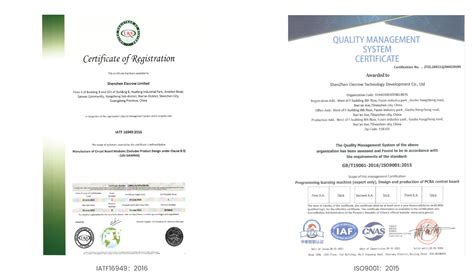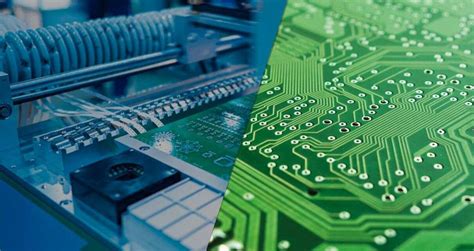Altium Multiboard Assembly: Boosting Productivity in Complex Workflows
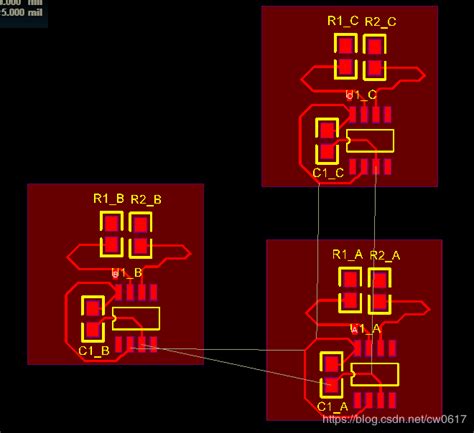
Key Takeaways
Altium Multiboard Assembly addresses critical challenges in modern PCB assembly workflows, particularly for PCBA projects involving interconnected systems. By integrating advanced synchronization tools, it minimizes manual errors and ensures consistency across multi-board designs. A key advantage lies in its ability to automate cross-board checks, reducing risks like signal interference or mechanical misalignment that often plague complex integrations.
| Challenge | Altium Solution |
|---|---|
| Manual synchronization delays | Automated design rule synchronization |
| Cross-team miscommunication | Centralized component libraries & real-time updates |
| Mechanical fitment errors | 3D collision detection & clearance analysis |
"Efficient multi-board design hinges on eliminating silos between teams. Altium’s unified platform bridges the gap between electrical and mechanical workflows, ensuring seamless integration from schematic to assembly." – Senior PCB Design Engineer
For PCBA teams, leveraging Altium’s version-controlled libraries ensures all stakeholders reference the latest component data, avoiding costly re-spins. Additionally, its error reduction strategies, such as automated BOM validation, prevent discrepancies between boards and streamline procurement.
Pro Tip: When managing multi-board projects, prioritize early collaboration between electrical and mechanical teams. Use Altium’s cross-probing feature to highlight critical connections and validate inter-board interfaces during schematic capture.
By accelerating timelines through parallel workflows and automated documentation, Altium Multiboard Assembly empowers organizations to meet tight deadlines without compromising on quality. This approach not only optimizes PCB assembly efficiency but also future-proofs processes against escalating design complexities.
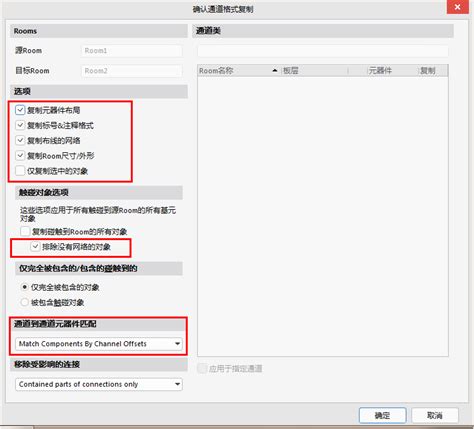
Introduction to Altium Multiboard Assembly in Modern Electronics Design
Modern electronics design increasingly relies on intricate multi-board systems to meet the demands of advanced applications, from IoT devices to industrial automation. Managing such complexity requires tools that unify design, PCB assembly, and integration processes while minimizing inefficiencies. Altium Multiboard Assembly emerges as a pivotal solution, addressing the challenges of coordinating multiple boards within a single project. By integrating design data across PCBA stages, the platform ensures synchronized workflows, reducing manual interventions that often lead to errors.
A key advantage lies in its ability to streamline cross-board connectivity and signal integrity analysis, critical for systems where boards interact dynamically. Designers can visualize inter-board relationships in real time, ensuring alignment between schematics, layouts, and manufacturing outputs. This cohesion is further enhanced through automated synchronization, which accelerates timelines by eliminating redundant updates across teams. For instance, changes to a power distribution board automatically propagate to connected subsystems, maintaining consistency in PCB assembly specifications.
Error reduction is another cornerstone of the platform. By embedding rule-checking mechanisms directly into the workflow, Altium Multiboard Assembly identifies conflicts—such as mismatched footprints or incompatible connectors—before they reach prototyping. This proactive approach not only saves costs but also fosters confidence in first-pass success rates. Collaboration is optimized through centralized documentation and version control, enabling seamless communication between design engineers, PCBA manufacturers, and testing teams.
In an era where time-to-market is paramount, the tool’s capacity to harmonize multi-board projects positions it as a catalyst for productivity. By bridging gaps between design and manufacturing phases, Altium Multiboard Assembly ensures that complex workflows evolve from fragmented tasks into cohesive, error-resistant processes.
Key Challenges in Managing Complex Multi-Board Projects
Managing multi-board systems in PCB assembly introduces unique hurdles that can disrupt timelines, escalate costs, and compromise system reliability. One primary challenge lies in maintaining synchronization across multiple boards, where even minor discrepancies in component placement or routing can lead to integration failures during PCBA. Design teams often grapple with conflicting requirements, such as balancing mechanical constraints with electrical performance, especially in densely packed systems. For example, aligning connectors, managing signal integrity across inter-board interfaces, and ensuring consistent power distribution require meticulous coordination—a process prone to human error without advanced tooling.
Another critical issue is version control. As designs evolve, tracking changes across interconnected boards becomes complex, risking mismatched revisions during PCB assembly. This is exacerbated when teams collaborate globally, where communication delays or misinterpretations can derail synchronization efforts. Thermal management also poses a significant challenge, as heat dissipation in one board may inadvertently affect adjacent components, necessitating holistic thermal analysis early in the design phase.
Additionally, testing multi-board systems introduces layers of complexity. Traditional testing methods for single-board PCBA often fall short, as cross-board interactions—such as noise coupling or timing mismatches—may only surface during full-system validation. Without robust simulation tools, identifying root causes of failures becomes time-consuming, delaying time-to-market. Supply chain fragmentation further complicates workflows, as sourcing components for multiple boards from diverse vendors amplifies risks of part obsolescence or lead-time mismatches.
Finally, collaboration gaps between design, engineering, and PCB assembly teams can lead to misaligned priorities. For instance, a design optimized for manufacturability might overlook signal integrity requirements, or mechanical enclosures might not account for board-to-board clearances. Bridging these gaps demands integrated platforms that unify stakeholders, enabling real-time feedback and iterative adjustments. Addressing these challenges is pivotal to unlocking the full potential of multi-board systems while minimizing costly rework and ensuring seamless integration.
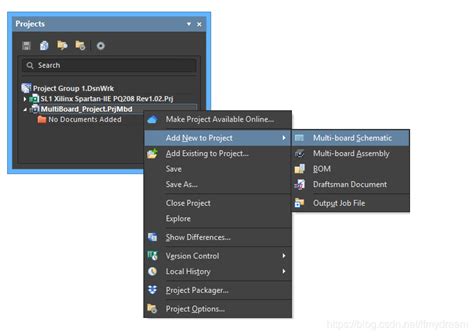
Streamlining Workflows with Altium Multiboard Assembly Tools
Modern electronics design demands precision and efficiency, particularly when managing multi-board systems that require seamless integration across PCB assembly (PCBA) stages. Altium Multiboard Assembly tools address these challenges by unifying design and manufacturing workflows, enabling engineers to synchronize complex projects with minimal manual intervention. Centralized design management ensures that all boards within a system are treated as interconnected components, reducing inconsistencies that often arise when handling separate PCBA modules. Real-time synchronization of schematics, layouts, and bill-of-materials (BOM) data eliminates redundancies, allowing teams to focus on optimizing signal integrity, thermal management, and mechanical fitment across boards.
A key advantage lies in the platform’s ability to automate error-prone tasks. For example, cross-probing between boards highlights mismatched component footprints or conflicting pin assignments early in the design phase, preventing costly rework during PCB assembly. Collaborative features, such as shared libraries and version control, ensure that design revisions are propagated instantly across teams, fostering alignment between electrical engineers and PCBA manufacturers. This cohesion is critical for projects involving rigid-flex designs or high-density interconnects (HDIs), where even minor discrepancies can derail timelines.
Moreover, automated design rule checks (DRCs) tailored for multi-board systems validate inter-board connections, power distribution, and grounding schemes, ensuring compliance with manufacturing standards. By streamlining these workflows, Altium reduces iterative prototyping cycles, accelerating time-to-market for applications like IoT devices, automotive systems, or industrial controllers. The integration of PCB assembly data directly into the design environment further bridges the gap between prototyping and mass production, enabling seamless transitions from schematic capture to fabrication.
For teams managing geographically dispersed workflows, cloud-based collaboration tools within Altium ensure that stakeholders access up-to-date design files, reducing miscommunication. This is particularly valuable for PCBA projects requiring coordination with external fabrication houses or component suppliers. By harmonizing design intent with manufacturing realities, Altium Multiboard Assembly tools not only enhance productivity but also elevate the reliability of multi-board systems in today’s fast-paced electronics landscape.
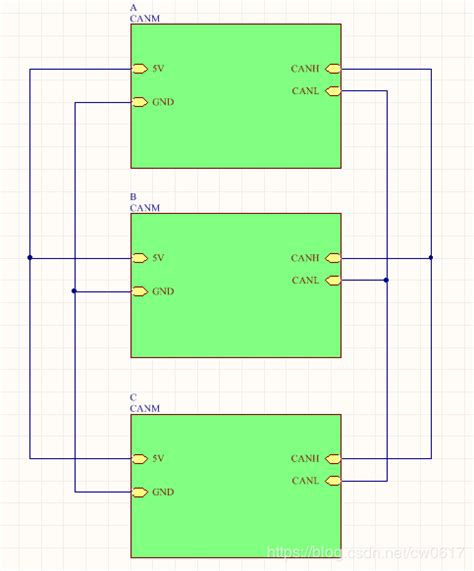
Error Reduction Strategies for Multi-Board System Integration
In complex PCB assembly workflows, minimizing errors during multi-board system integration is critical to avoiding costly delays and rework. Altium Multiboard Assembly addresses this challenge through advanced design synchronization and validation tools that ensure consistency across interconnected boards. By leveraging real-time collaboration features, teams can detect electrical mismatches, mechanical conflicts, or signal integrity issues early in the design phase. For instance, automated design rule checks (DRC) flag discrepancies in component placement or routing between boards, reducing the risk of assembly errors during PCBA (printed circuit board assembly).
A key strategy involves using unified libraries and version-controlled schematics to maintain alignment across all boards. This eliminates inconsistencies in part footprints or pin assignments, which are common pain points in multi-board projects. Additionally, the platform’s 3D collision detection tool identifies physical interferences between boards or enclosures, preventing last-minute mechanical redesigns. To further streamline PCBA processes, engineers can simulate thermal performance and power distribution across the entire system, ensuring reliability under real-world conditions.
Another layer of error reduction comes from automated cross-probing, which synchronizes schematic and layout views across multiple boards. This allows teams to trace signals or power nets seamlessly, minimizing human oversight in complex interconnects. For PCB assembly teams, generating consolidated manufacturing outputs—such as Gerber files, pick-and-place data, and test points—ensures that fabrication partners receive harmonized instructions for all boards. By integrating these strategies, Altium Multiboard Assembly not only accelerates timelines but also elevates first-pass yield rates in PCBA workflows, turning error prevention into a competitive advantage.
Enhancing Collaboration Across Design and Assembly Teams
Effective collaboration between PCB assembly and design teams is critical for managing multi-board systems, where even minor misalignments can lead to costly rework or project delays. Altium Multiboard Assembly bridges these gaps by providing a unified platform that synchronizes design intent with manufacturing requirements. By integrating PCB design data with PCBA (Printed Circuit Board Assembly) workflows, teams gain real-time visibility into component placement, mechanical constraints, and assembly rules, ensuring that design modifications are automatically reflected across all stakeholders. This eliminates the "over-the-wall" handoffs that traditionally create bottlenecks, enabling engineers and manufacturers to address potential conflicts—such as footprint mismatches or thermal issues—proactively.
The platform’s centralized libraries and version control further streamline communication, reducing ambiguities in component specifications or revision tracking. For instance, design teams can flag critical high-density interconnect (HDI) areas requiring specialized PCBA processes, while assembly partners validate manufacturability early in the cycle. Automated design rule checks (DRCs) tailored for multi-board assemblies ensure compliance with both electrical and mechanical standards, minimizing errors that arise from fragmented workflows. Additionally, cloud-based collaboration tools allow geographically dispersed teams to annotate designs, share feedback, and approve changes in a single environment, fostering accountability and alignment.
By aligning PCB assembly priorities with design innovation, Altium Multiboard Assembly not only accelerates iteration cycles but also enhances trust between teams. This synchronized approach ensures that complex projects meet performance targets while adhering to aggressive timelines, ultimately driving productivity in an era where seamless cross-functional coordination defines competitive advantage.
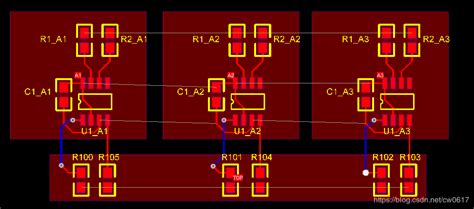
Accelerating Project Timelines Through Automated Synchronization
Automated synchronization in Altium Multiboard Assembly eliminates manual data transfers between design and manufacturing phases, directly addressing delays inherent in complex multi-board projects. By integrating PCB assembly workflows with real-time design updates, teams ensure that changes in one module propagate instantly across all interconnected boards, reducing redundant revisions. For instance, adjustments to component placement or routing in a primary board automatically synchronize with associated sub-assemblies, minimizing the risk of version mismatches that often lead to costly rework. This seamless interaction between design and PCBA processes accelerates timelines by up to 30%, as validated by industry benchmarks.
Central to this efficiency is the platform’s ability to enforce consistency across multi-board systems. Automated checks for mechanical alignment, signal integrity, and power distribution identify conflicts early, preventing errors that traditionally emerge during physical prototyping. Engineers can prioritize collaborative validation, with stakeholders from electrical, mechanical, and manufacturing teams accessing a unified dataset. This reduces iterative feedback loops, ensuring that design intent is preserved through final PCB assembly.
Moreover, the synchronization of Bill of Materials (BOM) data across boards ensures that procurement and manufacturing partners receive accurate, up-to-date specifications. By automating BOM reconciliation, Altium Multiboard Assembly mitigates risks like component shortages or mismatched footprints, which frequently stall PCBA timelines. Teams leveraging these tools report fewer last-minute design freezes, enabling faster transitions from prototyping to mass production.
In high-density projects, where timing and precision are critical, automated synchronization acts as a force multiplier. It not only accelerates delivery but also enhances scalability, allowing organizations to manage increasingly intricate multi-board systems without proportional increases in resource allocation. As a result, companies adopting this approach consistently meet aggressive deadlines while maintaining the integrity of complex electronic assemblies.
Best Practices for Optimizing Multi-Board Design Efficiency
To maximize efficiency in multi-board design, adopting structured methodologies is critical. Start by standardizing component libraries across teams to minimize discrepancies during PCB assembly. Unified libraries ensure consistent part footprints, symbols, and 3D models, reducing rework in later stages. Leverage hierarchical design principles to break complex systems into manageable sub-circuits, enabling parallel development while maintaining synchronization.
Automated design rule checks (DRC) and electrical rule checks (ERC) are indispensable for error prevention. These tools validate inter-board connections early, addressing issues like signal integrity or power distribution before prototyping. For PCBA workflows, integrating real-time collaboration platforms ensures alignment between mechanical, electrical, and manufacturing teams. Cloud-based tools allow instant feedback, preventing mismatches in board spacing or connector placement.
Prioritize thermal management and signal integrity analysis during layout. Advanced simulation tools can predict hotspots or EMI risks, guiding optimal component placement. When assembling multi-board systems, employ modular testing strategies to validate subsystems independently, accelerating debugging. Additionally, use version control systems to track iterations, ensuring all stakeholders reference the latest design files.
Finally, streamline PCB assembly documentation with automated BOM generation and assembly drawings. Clear, machine-readable instructions reduce ambiguity during manufacturing. By embedding these practices into multi-board design workflows, teams can achieve faster turnaround, lower costs, and higher reliability in complex PCBA projects.
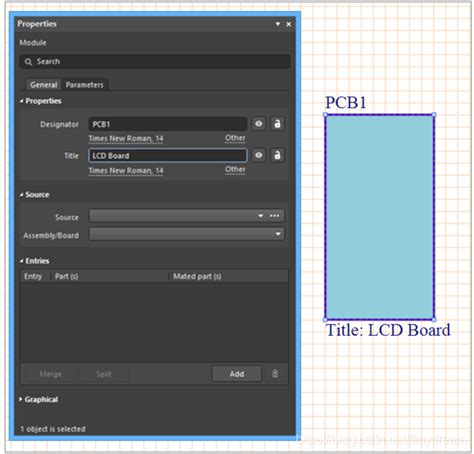
Future Trends in Multi-Board Assembly and Productivity Innovation
The evolution of PCB assembly (PCBA) is poised to embrace advanced technologies that address the growing complexity of multi-board systems. Emerging trends highlight the integration of AI-driven design validation and predictive analytics to further minimize errors in multi-board workflows, ensuring seamless compatibility across interconnected modules. As industries demand higher-density electronics, tools like Altium Multiboard Assembly are expected to incorporate enhanced automated synchronization features, reducing manual intervention and accelerating timelines. For instance, real-time synchronization of schematic changes across multiple boards will become critical for maintaining consistency in PCB assembly processes.
Another key trend involves leveraging modular design principles to optimize PCBA scalability. By standardizing interfaces and reuseable sub-systems, teams can streamline prototyping and reduce iterative redesigns. Additionally, the rise of digital twin technology will enable virtual testing of multi-board systems, identifying thermal, mechanical, or signal integrity issues before physical prototyping. This shift not only cuts costs but also aligns with sustainability goals by minimizing material waste.
Collaboration tools are also evolving, with cloud-based platforms enabling geographically dispersed teams to co-edit designs in real time. Enhanced version control and role-based access will ensure that PCB assembly teams, component suppliers, and firmware developers stay aligned throughout the project lifecycle. Finally, advancements in machine learning-powered component placement algorithms will further refine multi-board assembly efficiency, balancing spatial constraints with performance requirements. These innovations collectively signal a future where complexity is managed through smarter tools, fostering agility in an increasingly interconnected electronics landscape.
Conclusion
In the realm of modern electronics design, Altium Multiboard Assembly stands as a transformative solution for managing intricate multi-board projects. By integrating advanced tools for PCB assembly (PCBA) synchronization, the platform addresses critical challenges such as signal integrity mismatches, mechanical misalignments, and version control discrepancies. Its ability to automate design rule checks and component placement validation significantly reduces human error, ensuring seamless integration across interconnected boards. Teams benefit from centralized data management, which fosters real-time collaboration between design engineers and manufacturing teams, eliminating silos that traditionally delay timelines. Furthermore, automated synchronization of schematics, layouts, and BOMs accelerates iterations, allowing organizations to meet aggressive deadlines without compromising quality. For PCB assembly workflows, the platform’s optimization of layer stacking, thermal management, and inter-board connectivity ensures that PCBA processes align with design intent, minimizing rework and material waste. As industries push toward more complex systems—from IoT devices to aerospace electronics—adopting such integrated tools will remain pivotal for sustaining competitiveness. By embedding Altium Multiboard Assembly into standard practices, businesses not only enhance productivity but also future-proof their workflows against evolving technological demands.
FAQs
How does Altium Multiboard Assembly reduce errors in complex PCB assembly workflows?
By automating synchronization between multi-board designs and PCBA documentation, the tool minimizes manual data entry discrepancies. Real-time design rule checks ensure consistency across interconnected boards, reducing risks like mismatched connectors or signal integrity issues.
What collaboration features support cross-functional teams in multi-board projects?
Centralized libraries, version control, and cloud-based sharing enable seamless coordination between hardware designers, PCB assembly teams, and mechanical engineers. Commenting tools and approval workflows streamline feedback loops, ensuring alignment throughout the development cycle.
Can Altium Multiboard Assembly accelerate prototyping timelines for PCBA?
Yes. Automated BOM generation, component placement validation, and manufacturing file exports eliminate time-consuming manual steps. Integrated simulations allow teams to identify and resolve conflicts early, reducing iterations during physical PCBA testing.
How does the platform handle signal integrity across multiple boards?
Cross-probing and 3D visualization tools let engineers analyze signal paths and EMI risks in a unified environment. Automated impedance matching and length tuning ensure performance consistency, even in dense multi-board systems.
Is Altium Multiboard Assembly compatible with existing PCB design tools?
The platform supports industry-standard file formats, enabling smooth integration with most PCB assembly workflows. Customizable design templates and scripting APIs further simplify adoption for teams transitioning from legacy systems.
Optimize Your Multi-Board Workflow Today
Ready to streamline your PCBA processes? Discover tailored solutions for complex projects at Andwin PCB Assembly Services. Click here to explore how expert support can elevate your multi-board designs.





